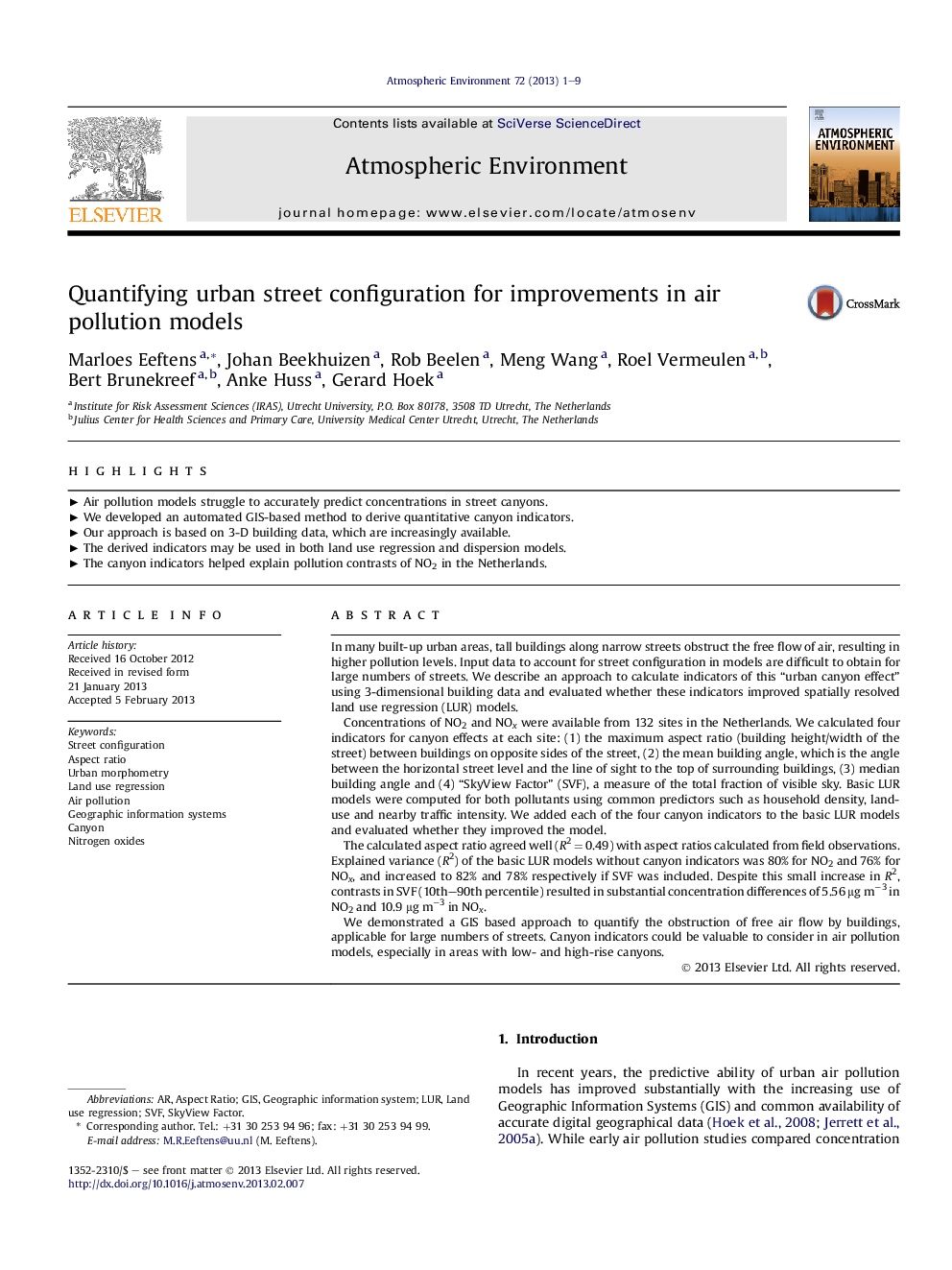| کد مقاله | کد نشریه | سال انتشار | مقاله انگلیسی | نسخه تمام متن |
|---|---|---|---|---|
| 4438328 | 1620399 | 2013 | 9 صفحه PDF | دانلود رایگان |

In many built-up urban areas, tall buildings along narrow streets obstruct the free flow of air, resulting in higher pollution levels. Input data to account for street configuration in models are difficult to obtain for large numbers of streets. We describe an approach to calculate indicators of this “urban canyon effect” using 3-dimensional building data and evaluated whether these indicators improved spatially resolved land use regression (LUR) models.Concentrations of NO2 and NOx were available from 132 sites in the Netherlands. We calculated four indicators for canyon effects at each site: (1) the maximum aspect ratio (building height/width of the street) between buildings on opposite sides of the street, (2) the mean building angle, which is the angle between the horizontal street level and the line of sight to the top of surrounding buildings, (3) median building angle and (4) “SkyView Factor” (SVF), a measure of the total fraction of visible sky. Basic LUR models were computed for both pollutants using common predictors such as household density, land-use and nearby traffic intensity. We added each of the four canyon indicators to the basic LUR models and evaluated whether they improved the model.The calculated aspect ratio agreed well (R2 = 0.49) with aspect ratios calculated from field observations. Explained variance (R2) of the basic LUR models without canyon indicators was 80% for NO2 and 76% for NOx, and increased to 82% and 78% respectively if SVF was included. Despite this small increase in R2, contrasts in SVF (10th–90th percentile) resulted in substantial concentration differences of 5.56 μg m−3 in NO2 and 10.9 μg m−3 in NOx.We demonstrated a GIS based approach to quantify the obstruction of free air flow by buildings, applicable for large numbers of streets. Canyon indicators could be valuable to consider in air pollution models, especially in areas with low- and high-rise canyons.
► Air pollution models struggle to accurately predict concentrations in street canyons.
► We developed an automated GIS-based method to derive quantitative canyon indicators.
► Our approach is based on 3-D building data, which are increasingly available.
► The derived indicators may be used in both land use regression and dispersion models.
► The canyon indicators helped explain pollution contrasts of NO2 in the Netherlands.
Journal: Atmospheric Environment - Volume 72, June 2013, Pages 1–9